Nebula Icons


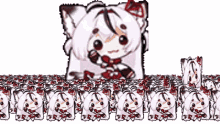
- The Elephant’s Trunk Nebula [OC]



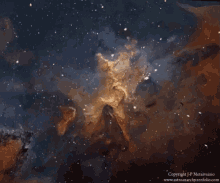
- Ngc 2264 - Christmas tree cluster from my telescope 9 hours of exposure time

✧˖°࿐ 𝐈𝐜𝐨𝐧 𝐍𝐞𝐛𝐮𝐥𝐚

✰ 𝑎𝑠𝑡𝑟𝑜𝑛𝑎𝑢𝑡 𝑖𝑐𝑜𝑛

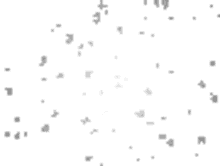
- The Helix Nebula, a Planetary Nebulae, Infrared & Ultraviolet, 2012 x-post /r/HI_Res [6019 x 6019]

𝐍𝐄𝐁𝐔𝐋𝐀 | Icons 🤍



- Bruh

Galaxy

Agujero Negro


- I pointed my telescope at SH2-308, also known as the Dolphin Head, for 28 hours at my High School and got this picture

~Teal Blue

Moon


- An (almost) starless Lagoon Nebula

Nebula Abstract Art 31


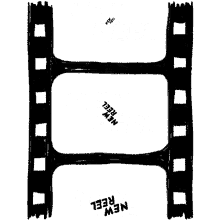
- The orion nebula although overused, is still just... Beautiful.

★

~Teal Blue

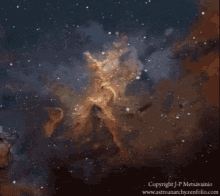
- The Hubble snapped a picture of a sun-like stars demise




- Cosmos



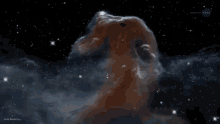
Finally, since I got into astrophotography I wanted to shoot the Helix nebula but either I forgot and then it was too late in the season or the equipment didnt work properly but finally I got it. Since it rises only few degrees above horizon from where I live I wont be doing any extremely long shooting and rather move to other targets but Im still happy I can tick this one off ✅🙂 Telescope used: TS Photoline 130/910 APO Triplet with fpl53 glass mady by @teleskop_service Camera: ZWO ASI1600MM Pro with ZWO filters. Mount: iOptron CEM60 Accessories: EAGLE3Q and Sesto Senso by @primalucelab _________________________________ Check out @teleskop_service for astronomy equipment, link in bio _________________________________ #astronomy #astrophoto #astrophotography #youresa #universetoday #instaphoto #instadaily #science #nature #beautiful #cosmos #telescope #photography #zwoasi #ioptron #primalucelab #deepspace #deepskyphotography #godseye #helix #nebula #helixnebula #milkywaypics #astro_photography_ #astrophysics #eye #telescope_service #photooftheday #nightsky #stars - @veleba_astrophoto on Instagram

cyborg

Large Magellanic Fireworks


- Galaxy


﹕✦ — space aesthetic ੭

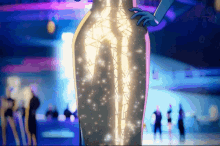
- Nebulas Galaxies Universe

Solar flare PFP :3 [Version 1]

𝐍𝐞𝐛𝐮𝐥𝐚


- Galaxy



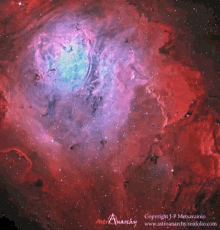
- South of Carina




- Astronomy


✦ 𝐧𝐞𝐛𝐮𝐥𝐚 ✦


Rose Nebula... الرحمن فَإِذَا انشَقَّتِ السَّمَاءُ فَكَانَتْ وَرْدَةً كَالدِّهَانِ And when the heaven is split open and becomes rose-colored like oil - (37) In this verse, the word Al-Dehan (hot oil) refers to the hotness of gases in the nebula. - @milky_way__galaxy on Instagram

Lancey foux



- The Heart Nebula

nebula icon

alien moodboard 👽🛸

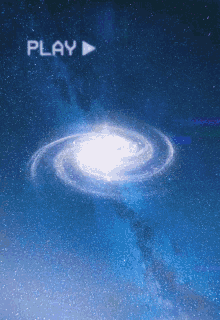
#RosetteNebula is 5000 light-years away and 130 light-years in diameter. Space is big. Really big. You just wont believe how vastly, hugely, mind-bogglingly big it is. - Douglas Adams #MoveShootMove #Sonya6300 #Sigma100400mm #SonyAlpha #BeAlpha #SigmaLens #ShotWithSigma #AstroPhotography #AstroPhoto #BackyardAstrophotography #Nightscape #Starscape #NightSky #NightPhotography #Nebula #DeepSpace #DiscoverWithAlpha #NGC2237 - @mrratdotcom on Instagram


- Nebulas Galaxies Universe


- My image of the Horsehead and Flame Nebula. So much dust in a single image. [OC] [3326x2504]


- Deep Space 9


- cosmos

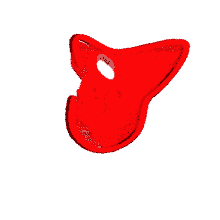
- R136 young stellar grouping which resides in 30 Doradus Nebula.

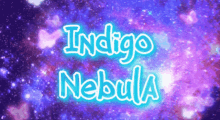
1h20 on the Sadr region I tried to bring as much as I could from this little data and I didn’t expected that much given that this was taken under bortle 6 with 60% moon, maybe I’ll add some hours on it 🌌 Iso 3200 70-200 f4 at 140 mm f4 3 min subs Modded canon 600d L enhance filter #sadr #staradventurer #instagood #instagram #photographer #astrology #astromaniacmag #astronomy #nasa #canonphotography #nature #naturephotography #photography #photo #photooftheday #peace #astrobackyard #astrophotography #spacex #milkyway #moon #andromeda #andromedagalaxy #galaxies #highpointscientific #science #telescope #deepspace #stars #earliestlight - @un_untrackedastropics on Instagram


- Thors Helmet

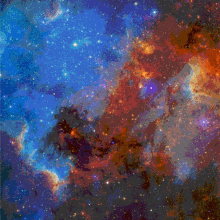
- A cat, riding a lioness, throwing a giant spaceball while other cats lay around [10]


- My image of Messier 8, the Lagoon Nebula!


- NGC 7635, The Bubble Nebula


- My image of the most active star forming region in the night sky taken in true color


- The Medusa Nebula (also known as Abell 21) is an old planetary nebula some 1,500 light-years away along the southern border of the constellation Gemini.


🎵 #News: A new project using data sonification has turned #astronomical images from Chandra and other #telescopes into sound, bringing the center of the Milky Way, Cassiopeia A, and the Pillars of Creation to listeners for the first time. More in the comments... Hear them all at: http://s.si.edu/sonify Credit: #NASA/CXC/SAO/K. Arcand, M. Russo & A. Santaguida #space #sound #astronomy #music #listen #accessibility #data #sonification - @nasachandraxray on Instagram

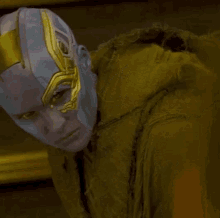
- From the Lagoon to the Eagle Nebula - The Red is Hydrogen Alpha in our Milkyway Galaxy

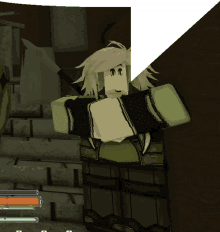
- NGC 5189 picture from NASA. [980 × 551]

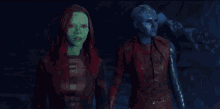
new beats. which one is the hardest? - @mtwentybeats on Instagram


- Beautiful outer space

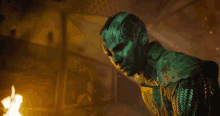
- WR 136 | The Wolf-Rayet Shells of the Crescent Nebula


- The Eastern Veil from my Driveway

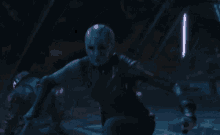
- My image of the Horsehead and Flame nebulae in true color which recently got me shortlisted for Astronomy Photographer of the Year [OC]

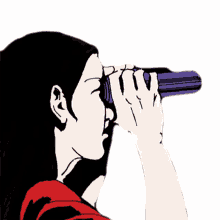
- The Pillars Of Creation (2 versions from the same data)


- NGC 2024 and Barnard 33: The Flame and the Horsehead


- Backgrounds & Wallpapers


- The Eastern Veil Nebula


- #PrettyGalaxies

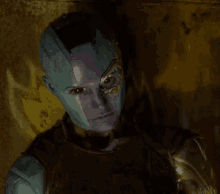
- The Cocoon Nebula


- The gorgeous Orion Nebula and Running Man Nebula [OC]

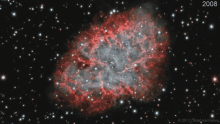
- Astrology


🦀The Crab supernova was observed in 1054 CE and its remnant has become one of the most famous objects in the #sky. At the center of the remnant is a dense neutron star about 30 kilometers in diameter that rotates once every 33 milliseconds — a pulsar! 📱Get this #incredible #pic as a new background #wallpaper for your phone or tablet: https://chandra.harvard.edu/instagram/wallpaper/ 🤔Want to #learn more about the #space #science behind the #image? https://chandra.harvard.edu/instagram/ X-ray (#Chandra): #NASA/CXC/SAO; Optical (#Hubble): NASA/STScI; Infrared (#Spitzer): NASA/JPL/Caltech; Radio (Very Large Array): NSF/NRAO/VLA; Ultraviolet (XMM-Newton): ESA/XMM-Newton #beautiful #amazing #astronomy #astrophysics #powerful #fast #universe - @nasachandraxray on Instagram

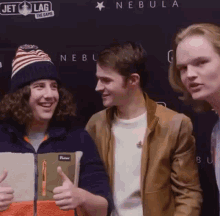
- The carina nebula.


- Ngc 2264 - 12 Hours Of Exposure Time [OC]

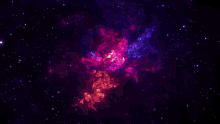
- A 6+ Hour Exposure of One of the Brightest Nebulae in Sky


The Statue of Liberty (NGC576), imaged by Magellan Team, almost 200h exposure time. Filters SHO-RVB - AstroPhysics 155 Starfire EDF-EQ8-CCD Moravian G4 16000. #astro #astronomy #astrophotography #deepspace #telescope #deepskychile #sky #chile #astronomia #astronomie #verylargetelescope #atacama #observatory #astronomiefrance #riohurtado #pichasca #observatories #observatoires #observatoiretoitouvrant #structure #steel #rollofroof #universe #nightscapes #astrofotografiachile #cosmos #largaexposición #moravian #skywatcher - @deepskychile on Instagram


- planet s


The bipolar structure of this nebula is one of the most complex ever discovered, and the star at its center, slowly condensing to a white dwarf, is one of the hottest in the galaxy. Image credit: Yuri Dmitrienko - @universalviews on Instagram

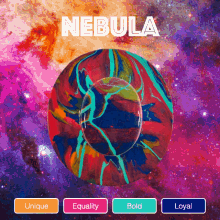
- Orion Nebula

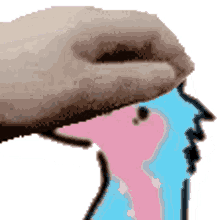
- Mystic Mountain Taken by Hubble

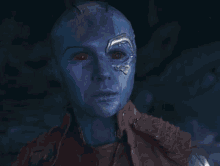
- NASA pictures


- The great brain in space! Also known as the crescent nebula. Captured by me and my amateur equipment in my backyard.

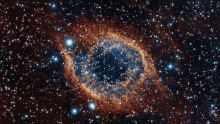
- Space Photos


Young stars create dramatic sculpture ✨ Star-forming region N66 is located 210,000 light years away in the small Magellanic cloud (SMC), a satellite galaxy of our milky way. Outflows of energy and radiation from hot young stars are eroding the dense outer portions of this region, exposing stellar nurseries. 💖 Thank u @aijemoigres love u so mucho - @eugeniagamero on Instagram


Star Forming Region NGC 3582 . Whats happening in the NGC 3582 nebula? Bright stars and interesting molecules are forming. The complex nebula resides in the star forming region called RCW 57. Visible in this image are dense knots of dark interstellar dust, bright stars that have formed in the past few million years, fields of glowing hydrogen gas ionized by these stars, and great loops of gas expelled by dying stars. A detailed study of NGC 3582, also known as NGC 3584 and NGC 3576, uncovered at least 33 massive stars in the end stages of formation, and the clear presence of the complex carbon molecules known as polycyclic aromatic hydrocarbons (PAHs). PAHs are thought to be created in the cooling gas of star forming regions, and their development in the Suns formation nebula five billion years ago may have been an important step in the development of life on Earth. The above image was taken at the Desert Hollow Observatory north of Phoenix, Arizona, USA. © NASA (APOD) Follow @nightsky & @spaces for more ✨ - @spaces on Instagram


- The Heart Nebula

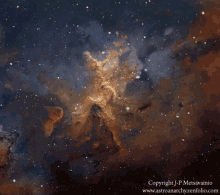
- Space artwork


- The Veil: Gossamer Ripples of an Ancient Supernova


Click the link in our Bio @The_department_of_astronomy to take a look at our Awesome Space Tees, Hoodies, Hats, Coffee Mugs & Yoga Pants now! ✨ What are your first thoughts on this snap? ☄️ For a shoutout use #astronomydepartment in your pics! ☄️ ___________________ #astronomer #astronomicalclock #sciencenerd #sciencerules #sciencecenter #cosmoschool #universeum #spacesuit #hubbletelescope #spaceships #astrophoto #astrologyreadings #nasa🚀 #educatedontdiscriminate #scienceteacher #cosmology #sciencefair #spacetravel #sciencecentre #educatedblackwoman #sciencelab #spacestation #astrography #nasa #educated #science #hubble #spacex #milkywaychasers - @the_department_of_astronomy on Instagram


- This new composite image shows the region around the Pillars of Creation, which are about 5,700 light years from Earth. The image combines X-ray data from NASA’s Chandra X-ray Observatory and Hubble Space Telescope optical data.

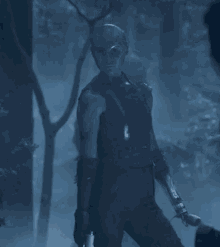
- Grandpa sweater


- From my light polluted backyard in fort Worth tx, I share with you my elephants trunk nebula in sho Hubble pallete

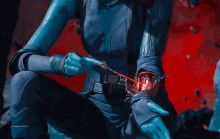
- AMAZING PHOTOS


- Horsehead and Flame Nebulae [4000x2895][OS][OC]


#ASIWEEK 39/2020 #astronomy #astrophotography #asi1600 #zwo #asicamera - @zwoasi on Instagram


- Right now Chandra is studying stars in Cygnus. Our Sun is an average-sized star that will have a lifespan of around 10 billion years. More massive stars, like those found here in Cygnus OB2, only last a few million years.

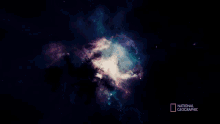
Eastern Veil Nebula NGC 6992 . First light on my new camera, the ZWO ASI 1600mm pro! 😁 I’m thrilled with this result. This is my first narrowband image, shot in Ha and oiii 7nm bandpass (Hydrogen alpha and Oxygen) Still have a lot to learn about how to use a dedicated astronomy camera, this is just the tip of the iceberg 😉 . . WO Z61, CEM-40 ASI 1600MM pro 180s x 25 Ha (75 min) 180s x 25 Oiii (75 min) 2.5 hours total integration Agra, India (bortle 8) moon: 91% 28th Sep 2020 . #astrophotography #astronomy #space #solarsystem #deepsky #nightsky #astrophoto #astrophotographer #universetoday #canonindia #astrophotographyindia #nebula #galaxy #NGC6992 #veilnebula #easternveil #zwo #1600mmpro #narrowband @astrophotography.india - @shivam.bansal42 on Instagram

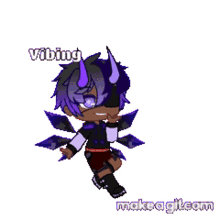
- Lagoon Nebula

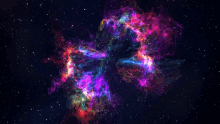
- School Themes


- My amateur attempt at the Orion nebula!


- cosmos


- NGC 1499 - The California Nebula [OC]


- Thors helmet nebula


- Tarantula Nebula, place for death and birth! [OC]

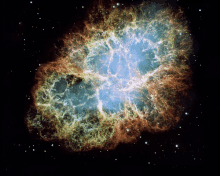
- Alpha Centauri


- Rosette Nebula in SHO. Pointed at the same location for 9.5hours

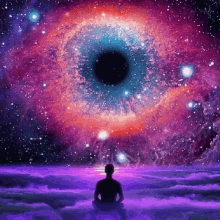
- THE BUBBLE NEBULA

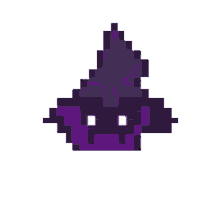
A few nights with terrible conditions (clouds, etc.) on the Veil Nebula with the Optolong L-Extreme, from Tokyo! 517x60s with 533MC Pro. A bit noisy, but not too horrible! #astrophotography #veilnebula #optolong #lextreme - @cuivlazygeek on Instagram


The veil nebula complex It constitutes the visible portions of the Cygnus Loop, a supernova remnant, many portions of which have acquired their own individual names and catalogue identifiers. The source supernova was a star 20 times more massive than the Sun, and it exploded between 10,000 and 20,000 years ago. The remnants have since expanded to cover an area of the sky roughly 3 degrees in diameter (about 6 times the diameter, and 36 times the area, of the full Moon). While previous distance estimates have ranged from 1200 to 5800 light-years, a recent determination of 2400 light-years is based on direct astrometric measurements.(The distance estimates affect also the estimates of size and age.) The Hubble Space Telescope captured several images of the nebula. The analysis of the emissions from the nebula indicate the presence of oxygen, sulfur, and hydrogen. The Cygnus Loop is also a strong emitter of radio waves and x-rays Data: 239x3min lights 64 darks 30 flats 200 bias Unity gain -5c sensor temp Total integration 11.95 hours Equipment: Qhy294c, Celestron avx with ADM saddle, spacecat 51, zwo 30mm guidescope, zwo asi120mm mini Calibrated and processed in pixinsight Thank you for looking and always keep your head up to the stars #OPTeam #astrophography #stars #space #cosmos #starseed - @gorilla_astro on Instagram


- Propeller Nebula [4276x3444][OS][OC]


- My summer work: NGC 7000 in narrowband [3840 x 2610]

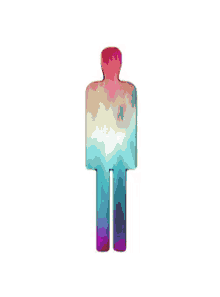
- Space


- I knew narrowband filters would be great, but I wasnt expecting this: Horsehead Nebula

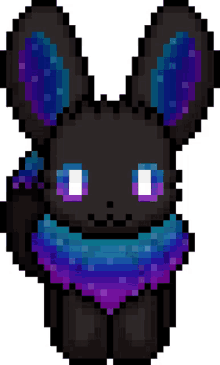
- Star Formation in the Tadpole Nebula


- The Orion Nebula in Infrared from WISE Image Credit: WISE, IRSA, NASA; Processing & Copyright : Francesco Antonucci [1824x1821]


- The Western Veil


Added a hour and a half more on the last data, this target actually is pretty low in the sky, I’ll wait it to get higher before retrying to get the best out of it Iso 1600 70-200 f4 at 200mm f4 2 min 30 subs (3 hours total) Modded canon 600d L enhance filter #heartnebula #staradventurer #instagood #instagram #photographer #astrology #astro #astronomy #nasa #canonphotography #nature #naturephotography #photography #photo #photooftheday #peace #astrobackyard #astrophotography #spacex #milkyway #moon #andromeda #andromedagalaxy #galaxies #highpointscientific #science #telescope #deepspace #stars #earliestlight - @un_untrackedastropics on Instagram


Here is the Eastern Veil Nebula (NGC 6992), a cloud of heated and ionised gas and dust located 2,400 light years away! Captured with a Celestron RASA 11”, Losmandy G-11 Mount, ZWO ASI294MC-Pro camera, and Altair QuadBand filter. 2 hours 20 minutes total integration time (70 x 2-minutes). Stacked and processed in PixInsight, with final edits in Topaz Denoise AI and Lightroom. - @nightskydan on Instagram

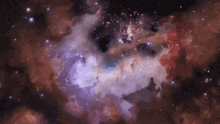
- I pointed a camera at the sky for over 1 hour and captured this true colour image of Orions sword & the M42 nebula from my local park.


So @nasa is making beats now, by transforming data from astronomical images into audio using sonification. Any of you interested in doing a remix for them? 👽 ☝ Follow us for more content like this . . . . . . #loopcloud #loopmasters #samples #freesamples #royaltyfree #logicprox #ableton #reason #flstudio #producer #loops #writersblock #musicproduction #musicproducer #beatmaker #beatmakerlife #producerlife #edmproducer #mixingtips #studiolife - @loopmastersofficial on Instagram

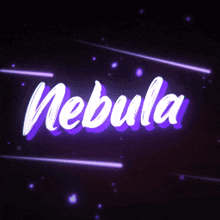
- A Massive System of Stars


The Tulip Nebula - SH2-101 Equipment @celestronuniverse Edge HD 8” @zwoasi 1600mm, 224MC, OAG, ASIAIR PRO, & EAF Astronomik SHO Filters @skywatcherusa EQ6-R Mount Acquisition -5.3hrs SII, 5.8hrs HA, & 5.7hrs OIII - 17hrs Total Integration Time -50 Darks, 50 Flats, 250 Bias per session -Gain 139 -Temp-15c -Bortle 5 -Jason Wiscovitch - @AstroBackYardUtah #nightsky #ig_nightphotography #astrophotography #universetoday #nightscape #starrynight #milkywaygalaxy #stargazing #photoshop #longexposure_shots #astrophoto #nightimages #milkywaychasers #nightshooters #natgeospace #ig_astrophotography #deepsky #weownthenight_la #space #nasa #universe #galaxies #clusters #celestial #stars #cosmic #APOD - @optcorp on Instagram

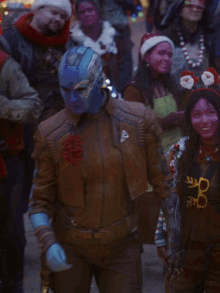
- Star Trek


- Supernova remnant G65.3+5.7 in Cygnus hidden inside the milky way [OC]


- Seven Dusty Sisters

- Nebulas

- Astronomy

- Wizard Nebula Captured, 8.7hrs Broadband True Color.

- The Pencil Nebula in Red and Blue

This 2010 image from the Herschel Space Observatory shows dust clouds associated with the Rosette Nebula, a stellar nursery about 5,000 light-years from Earth in the Monoceros, or Unicorn, constellation. Herschel collected the infrared light given out by dust. The bright smudges are dusty cocoons containing massive embryonic stars, which will grow up to 10 times the mass of our Sun. The small spots near the center of the image are lower mass stellar embryos. The nebula itself is located to the right of the picture, along with its massive cluster of stars. Credit NASA - @astronomyuniverse on Instagram

Join us, wherever you are in the world 🪐 Alongside the release of Cosmic Clouds 3-D (the first ever book to present photographs of nebulae in 3-D in a journey spanning the birth, death and recycling of stars), we’re hosting a free virtual event with the creators: 💫 Legendary Queen guitarist, astrophysicist and founder of The London Stereoscopic Company, Brian May @brianmayforreal 🌙 Astronomy magazine’s editor, David J. Eicher ✨ Astrophotographer, J-P Mestävainio They will explore how the universe creates stars from recycled gas and how our solar system will end as a glowing planetary nebula. You’ll also have the chance to put your own questions to the speakers on the night. Follow the link in our bio to join us 🪐 #ScienceMuseum #Science #Space #Stars #Nubulae #Nebula #CosmicClouds3D #Astronomy #Astrophotography #SolarSystem #Planets - @sciencemuseum on Instagram

- The Rosette Nebula - What you can get with a DSLR and telescope from the city!

- Dark Stars

- The Heart and Soul Nebulas. Located in the Casseiopia Constellation.

- I see your baby animals and hand tools, and raise you these adorable baby stars all snuggled up in their stellar nursery.

- Astronomics Photos

- Western Veil Nebula

- All

- The Galaxies

- SH2-155: The Cave Nebula

Pelican Nebula or IC 5070,, an emission nebula in constellation Cygnus. A bit lucky... I was able to get 25 images, 240 seconds each shot in between clouds. Moon 17% waxing crescent. 08/22/2020, Bortle 5 . . . . . #pelican #deepsky #deepskyobject #deepsky #nebula #space #stars #galaxy #alien #newtoniantelescope #telescope #skywatchereq6rpro #eq6rpro #spacedust #nightphotography #northamerican #longexposure #planet #friends #amazinglongexposure #mtl #montreal #longexpo #nasa #nikond750 #happy #nikoncanada #nikoncamera #pelicannebula #northamericannebula #northamericanebula - @lrenzbustillo on Instagram

- The Tadpoles of IC 410

Tarantula Nebula (30 Doradus) 🕷️ Located approximately 160,000 light-years away, 30 Doradus, or more commonly known as the Tarantula Nebula, is a region of interstellar atomic ionized hydrogen (HII region) in the Large Magellanic Cloud 🌀, an orbiting satellite galaxy of the Milky Way 🌌. At the centre of the Tarantula Nebula is the star cluster NGC 2070, which includes the star concentration R136 🌟. R136, an approximate 450,000 solar mass cluster, produces most of the energy that makes the nebula visible. Follow @space._astronomy to see more! 🔥 . . . #nebula #galaxy #tarantula #cosmos #tarantulagalaxy #cosmology #universe #astronomy #astrophysics #nightskyspace #astronomy #astrophotography #universetoday #universe #galaxy #galaxies #cosmos #spacetoday #spacetime #outerspace #deepspace #spaceporn #astrophysics #thecosmos #stargaze #astronomicalobject #outerspace #telescopes #telescope #observatory #nasa #xray #exoplanets #planets - @space._astronomy on Instagram

- Breathtaking Universe

To be featured? use #astrophotography on your photos 🌟👑 Whats your opinions?? 🥇 #moonwalkers #stars #lunarnewyear #cosmos #universe #cosmosart #astronomyposts #milkyway_nightscapes #milkywayfarm #cosmostar #lunarcycle #spaceboy #moon_skyclouds #milkywaygalaxy #starsystem #spacemaneffects #milkywaypics #starstableonly #milkywayediciones #lunarlon #spacewheel #starstyle #astronomyy #lunarphotography #milkywaystars #moon_of_the_day #spacecraft #universelove #starsdancetour - @theastronomytelescope on Instagram

- My true color image of the largest and brightest nebula in the sky, the Carina Nebula [OC]

- Nebulas

- The center of our home galaxy photographed on infrared by NASAs SOFIA airborne telescope a few days ago

new beats. which one is the hardest? - @mtwentybeats on Instagram

- Globules in the Running Chicken Nebula [1280 × 837]

- The great nebula in the Orion constellation.

- astronomy

- 3d wallpaper spiderman

- I photographed a nameless nebula in the constellation Cepheus with my telescope!! It is only known by a designator of NGC 7822! What would you name it?

- The Orion Nebula in Infrared

- The Soul Nebula [1600x1052][OS][OC]

- Part of the Cirrus nebula (NGC6992)

Туманність Шолом Тора ( NGC 2359) - галактична туманність залишки супернової типу EN (емісійна туманність) у сузірї Великого Пса. Знаходиться на відстані близько 15 000 світлових років від Сонця. Її розмір складає близько 30 світлових років. Туманність представляє собою космічну хмару, яка має форму шолома. Цей шолом схожий на бульбашку, видуту швидким вітром від яскравої масивної зірки біля його центру, в оточуючій молекулярній хмарі. Центральна зірка - виключно гарячий голубий гігант - належить до зірок Вольфа-Райє. - @planets_moons_stars on Instagram

A sky full of gems Lagoon and trifid nebula Follow @gorilla_astro on Instagram for more of my ground based Astrophotography First light with the QHY294c @qhyccd_astropic and the Triad ultra filter from @optcorp One of the many gems in located in the milky way galaxy. In dark skies the lagoon nebula is actually visible to the naked eye and along w/ its buddy the trifid can be seen with binoculars and short focal length Telescopes. Ill be honest Im no fan of summer here in Texas. It gets hot, it gets humid and the bugs are sure annoying. In fact the only things about summer here I like would be swimming and Astrophotography. With the milky way rising it gives light to beginners and adept alike to observe and photograph the night sky from the shortest to most narrow of focal lengths. Ill have to say the triad ultra from #optcorp is a superb filter and well worth every penny, and processing data from it and a color camera is sooooo much fun and opens up the imagination. #qhyccd really made a nice camera too and am very satisfied with the results after I got everything dialed in. Id say Im quite happy about this first light and look forward to many more images with this setup This setup was working side by side with my other one I used for the close up version of the trifid nebula recently posted in my gallery, so if you want to see the trifid a little bit closer to take a look at that and the equipment I used on the same nights beside this Data: 68x2min lights 64 darks 30 flats 200 bias Shot at unity gain Temperature -5 Equipment: Qhy294c, zwo asi120mm mini, William optics spacecat (250mm focal length), celestron avx, qhy polemaster, Pegasus dew heater system Calibrated and processed in pixinsight Thank you for looking and always keep your head up to the stars #space #stargazing #starchild #triadfilter #astro_taner #skyandtelescope - @gorilla_astro on Instagram

- A section of the Pelican Nebula.

- Taste the Rainbow! Region in Cygnus shot in Narrowband [2400 x 1742][OC]

Project Orion -My 2.5 gigapixel mosaic spanning 5 years, 267 panels, 12,816 photos, 640.8 imaging hours, and over 500 editing hours is complete. Please take some time to look at the full resolution and details at the link! LINK IN BIO! https://space4everybody.com/home/project-orion/ #astrophotography #space #astro #nasa #apodos - @cosmicwreckingball on Instagram

- The remains of a Supernova

- I pointed my telescope at this target for 30 hours to capture it. Its a giant nebula created from a huge star explosion.

Space clouds ☁️✨ #itsonzedge - @zedge on Instagram

- 123 T-shirt

- *Universe*

Everything in life is just for a while. — Philip K. Dick - @30303acid on Instagram

- Art Station

- This nebula in our galaxy is 6,500 light-years away and is where new stars are being born. I captured 8-hours of images through a 2-ft aperture telescope to show bright detail.

- Western Veil and Pickerings Triangle - 90 Minutes of Exposure from the City!

- Within the tempestuous Carina Nebula lies “Mystic Mountain.”

- The Cone nebula inside the Christmas Tree nebula

- Astronomical Stuff

- The Pelican Nebula from the city in HOO!

- A large Nebula [2400 x 2279]

- Western Veil Nebula

- The Cone Nebula From Hubble

- NGC3582 in Sagittarius

- The Flame, Horsehead, and the Great Orion Nebula captured in my 60-hour mosaic was chosen as todays AAPOD2!

- Chica gato neko anime

Happy #InternationalAstronomyDay I want to take this post to try and explain why I love astronomy so much. It provides both a harsh reality check and an eye-opening fresh perspective on life. On the one hand, astronomy reminds me that we are living out lives that are just tiny drops in the ocean on the grand scale of time. Capturing images of objects millions of light years away is a cruel reminder of that scale. It makes me feel infinitesimally small. On the other hand, focusing my mind on the cosmos lets me have a perspective on life I couldnt otherwise have. Sitting out under a blanket of stars in a dark night sky is an otherworldly experience. Once youre out there, staring up at thousands of stars with your own eyes, everything else just fades away. The daily stresses, debts you owe, clamoring internet articles, even the world news — it all just...fades away from your mind. It makes you realize that all of the little things that bother us every day are insignificant. There is comfort to be found in that insignificance, though, and it helps us keep a fresh perspective on life about what really matters. The people we love. The things weve done. The places weve seen. Those are what really matter. Every time I come back from a stargazing trip, I feel extremely grateful for everyone and everything thats important in my life. So this is a thank you, to astronomy, for giving me an outlook on the world I wouldnt otherwise have. Its something I hope everyone can truly feel at some point in their lifetime — I think it would make the world a much better place. Image details: This is the Rosette Nebula, located about 5,000 light years near the constellation Orion. It’s about 88 minutes of total exposure time. I captured the data that comprised image back in January 2020 in the dark skies of Death Valley National Park. - @absorbingphotons on Instagram

- Stunning Lagoon Nebula. Tons Of Colors!

It’s Feature Friday! Today we’re thrilled to share with you @j.sorrellsphoto Jeremiah Sorrells is a skilled photographer of both down-to-earth scenes and those that lie far out in deep space. Some shots are from his home base in Boise, but many document his travels far and wide. He includes detailed information on every deep space post so those less familiar with nebulae and galaxies can learn something new while admiring his images. If you think these shots are great, go take a look at some of the places around the world Jeremiah has been on his profile and follow him for future adventures. Feature Friday is our chance at High Point Scientific to show our appreciation for the talented people who make this hobby what it is. Whether or not you purchased your equipment from us, we appreciate good astronomy when we see it -- so whether youre an astrophotographer, nightscape photographer, or just a visual astronomer with some really cool gear, wed love to see your work! If you would like the chance to be featured on our page, please tag us in your photos @highpointscientific or use the hashtag #highpointscientific. #astronomy #telescope #telescopes #astrophotography #deepsky #deepskyobject #deepskyphotography #amateurastronomy #amateurastrophotography #backyardastronomy #astrophoto #astrophotographer #skyatnight #astronomyphotography #longexposure #longexpo #longexposureoftheday #longexposures #longexposurephotography #earthofficial #natgeoyourshot #natgeoastrophotography #nightskyphotography #universetoday #fantasticuniverse - @highpointscientific on Instagram

- The Cats Paw Nebula (NGC 6334), ESO, 2010 [2048x2127] (/r/HI_Res link in comments)

- Astronomy

Astro snapshot of the Eastern Veil from Friday Night. 50 min. Integration with the Canon EOS Ra. ... This photo wasnt meant for sharing, it was just a quick test shot of doubling up filters (Astronomik L2 + IDAS NB2) on the Ra for reasons I will get in to when I do a full review of the camera. However, after a quick processing and crop, I decided to share it as I was pretty wowed by the amount of signal considering this was just 50 minutes shot at f/6 from Bortle 9 with 90% moon! Pretty amazing what OSC cameras with dual narrowband filters can do today. I might be a convert (at least for fun quick shots, Ill still be using my mono camera for my big multi-year projects on the dim stuff). Clear skies, Nico ... #Astrophotography #astrofotografia #astrophoto #astrofoto #nebulaphotos #apjedicouncil #opteam #nightsky #night #stars #nebula #veil #easternveil #veilnebula #bortle9 #canonra - @nebulaphotosdotcom on Instagram

- NGC 6960 - West Veil & Pickerings Triangle

The Nebulosity of Cygnus in HOO Back in early summer when I was clinging on to the last remaining hours of astro twilight before the 6-8 week long period of no astro I managed to get 2.5 hours on Cygnus with my new Sigma Art 35mm lens If I’m honest I’d struggled badly to process it to a point I was happy so left it alone over the Summer, I decided to have another look at it last night and I’m so pleased that I did. Really happy with this outcome Enjoy the view 73x120s stacked with calibration in DSS, processed in Photoshop ZWO ASI1600MC Pro, 200 Gain, -15C Sigma Art 35mm f/1.4 at f/2.8 Altair Astro EF Adaptor iOptron CEM25P Pegasus Pocket Power Box Radian Triad Ultra Quadband 2” OSC Filter Images captured and dithered by APT, shot under Bortle 7 skies in my back garden #space #stars #astronomy #astronomie #astro #astrophoto #astrophotography #skyatnight #zwoasi #astrofotografia #ig_astrophotography #nightsky #natgeospace #deepsky #DSO #thenakedsingularity #OPTeam #universe #highpointscientific #your_astro #nebula #nightphotography #astrovoyagers #igworldclub_astrophotography #milliondollarvisuals #cygnus #hydrogenalpha #sigmaart35mm #narrowband #astrofoto - @astrophotoross on Instagram

- This is the Crescent Nebula and rarely seen (because its very faint) Soap Bubble Nebula. It took 11 hours of exposure time to capture them.

- Subaru telescope

What energizes the Heart Nebula? First, the large emission nebula dubbed IC 1805 looks, in whole, like a human heart. The nebula glows brightly in red light emitted by its most prominent element: hydrogen. The red glow and the larger shape are all powered by a small group of stars near the nebulas center. In the center of the Heart Nebula are young stars from the open star cluster Melotte 15 that are eroding away several picturesque dust pillars with their energetic light and winds. The open cluster of stars contains a few bright stars nearly 50 times the mass of our Sun, many dim stars only a fraction of the mass of our Sun, and an absent microquasar that was expelled millions of years ago. The Heart Nebula is located about 7,500 light years away toward the constellation of Cassiopeia. Coincidentally, a small meteor was captured in the foreground during imaging and is visible above the dust pillars. At the top right is the companion Fishhead Nebula. Credit NASA - @astronomyuniverse on Instagram

- I aimed a 2ft diameter telescope mirror at a nebula in the sky for 26-hours and here is the result.

- The Veil of Space [4000x4000]

- The Horsehead Nebula

- NGC 6357: The Lobster Nebula Image Credit: Dean Carr [3954x2953]

- An infrared image of the Helix Nebula taken by the Spitzer Space Telescope in 2007.

- Colour: Red

- Using almost 20 hours of exposure time from 397 photos taken over 4 seperate nights, I was able to capture this narrow band image of one of the Southern Hemispheres greatest sights - The Eta Carinae Nebula.

- I captured the Lobster Claw in deep space with 23 hours of exposure time. It is 8,000 light years from Earth.

- IC 1871: Inside the Soul Nebula Image Credit & Copyright: Mark Hanson [3922x3922]

IC 405...The Flaming Star Nebula, is an emission and reflection nebula located about 1500 light years away and about 5 light years across. It is located in the Auriga Constellation. This was a very short imaging session taken on October 5, 2019 as I was testing the stability of a DIY observatory. About 4 hours worth of 10 minute exposures with narrowband filters through an Explore Scientific ED102 telescope. #apod #nasa_apod #astronomyphotography #astronomypictureoftheday #zwo #explorescientific #deepskyobject #backyardastrophotography #nightskyphotography #optcorp @nasa_apod @explorescientific @zwoasi @astrobackyard - @astrophotographytech on Instagram

- Ngc 2264 - Christmas tree cluster 5 hours of exposure time [OC]

- The heart and soul nebula

Capture Ha, Hb, Sii, and Oiii at the same time, smaller stars, more nebulosity, amazing details, and quality, Whats there not to love about the Triad Ultra Filter? For more details on the Triad Filter click the link in our bio! This photo was taken on the Triad Ultra Filter by @astrophotoross The Heart Nebula, in Cassiopeia, HOO Palette The world seems to need a bit more love in it at the minute, people are dying and hurting for many reasons in what has been an incredibly challenging 2020 Hope everyone is safe, peace and parity to you all 15x600s stacked in DSS, processed in Photoshop ZWO ASI1600MC Pro, Unity Gain, -15C Canon EF L 70-200mm f/2.8 at 200mm f/4 iOptron CEM25P Pegasus Pocket Powerbox ZWO ASI120MM-S guide camera ZWO 60mm guide scope Radian Triad Ultra Quadband 2” OSC Filter #deepskyastrophotography #deepskyobject #natgeospace #astrophoto #spacephotography #spacephotos #nebulas #keeplookingup #science #solarsystem #spacespot #astrophotographer #heartnebula #triadfilter - @radiantelescopes on Instagram

- My 17 hour long exposure of Pickerings Triangle

- Treasure of the Southern Sky - The Great Carina Nebula

- Horse head nebula

- The Pillars of Creation (Dslr Image)

- NGC 6302: The Butterfly Nebula

- NGC 6960. The Witchs Broom. Read more about it on here: https://en.wikipedia.org/wiki/Veil_Nebula

- A 2012 Spitzer infrared image of the giant star Zeta Ophiuchi, about 370 light-years away, appearing to light up surrounding dust clouds.Credit...NASA/JPL

Whats all of the commotion in the Tadpole Nebula? Star formation. Dusty emission in the Tadpole Nebula, IC 410, lies about 12,000 light-years away in the northern constellation of the Charioteer (Auriga). The cloud of glowing gas is over 100 light-years across, sculpted by stellar winds and radiation from embedded open star cluster NGC 1893. Formed in the interstellar cloud a mere 4 million years ago, bright newly formed cluster stars are seen all around the star-forming nebula. Notable near the image center are two relatively dense streamers of material trailing away from the nebulas central regions. Potentially sites of ongoing star formation in IC 410, these cosmic tadpole shapes are about 10 light-years long. The featured image was taken in infrared light by NASAs Wide Field Infrared Survey Explorer (WISE) satellite. Credit NASA - @astronomyuniverse on Instagram

- Tulip Nebula Wide Field

- Astronomy

#ASIWEEK 36/2020 #zwo #asicamera #asi1600 #astronomy #astrophotography #deepsky - @zwoasi on Instagram

- The Eagle Nebula

- Tarantula Nebula

- The Keyhole in the Carina Nebula

Thors Helmet Nebula,.. NGC2359 Credits: Adam Block/Mount Lemmon /Skycenter /University of Arizona • - @spacerotation on Instagram

Nebula butterfly #stars #space #astronomy #astrophotography #deep_space #cosmos - @astrophotography on Instagram

The Helix Nebula was the inspiration for Nush Cole’s submission for the RAS bicentennial quilt square. She explains what drew her to it - and the technique used to create this beauty: “have always been drawn to the Helix Nebula. Im not sure if its because of the beautiful colours or the fact that it resembles an eye. I originally painted it on but that didnt look quite right so I decided to have a go at beading. The beads are from a belt I broke years ago. I thought they might come in useful for something and Im so pleased I finally got to recycle them. Ive had a lot of fun making my square and I learned a lot too. I cant wait to see what the quilt will look like when its finished!” You still have time to get involved and create your own patch for #RASquilt - check out RAS.ac.uk for details of the project and details of our next social sewing session on September 17. Helix Nebula taken by the Spitzer Space Telescope (Infrared, 2007) Credit: NASA, JPL, Caltech, Kate Su (Steward Obs., U. Arizona). Helix Nebula quilt square Credit: Nush Cole #RASquilt #helixnebula #nasa #astronomy #RAS200 #art #sciart #beading #space #STEAM #astronomy #spaceart #nebula - @royalastrosoc on Instagram

- Carinanebel

- Pickering’s Triangle [OC]

- Star Cluster

- color

- Beautiful Places

The rg veda refers to the Orion Constellation as Mriga (The Deer) It is said that two bright stars in the front and two bright stars in the rear are The hunting dogs, the one comparatively less bright star in the middle and ahead of two front dogs is The hunter and three aligned bright stars are in the middle of all four hunting dogs is The Deer (The Mriga) and three little aligned but less brighter stars is The Baby Deer. The Mriga means Deer, locally known as Harnu in folk parlance. There are many folk songs narrating the Harnu. In India, Nataraja ‘the cosmic dancer’ (an avatar of Shiva) is seen in the constellation called Orion. - @mrig_nakshatra_orion on Instagram

Happy Birthday to the Hubble Space Telescope! For 30 years it has captured and sent us images from space that have literally changed the way we see our universe. This image, nicknamed Cosmic Reef is of a firestorm caused by a star being born in a nearby galaxy. ☄️ - To learn more about what is happening in this image, and about Hubbles origin story, go to @NASAGODDARD s latest posts! 🛰️ - And if you want to know more about how the Hubble telescope works and how NASA compiles the images taken by it to create pictures like Cosmic Reef, check out our SciShow Space episode about it! #LinkInBio - Photo Credit: NASA, ESA, and STScl - - #HappyBirthdayHubble #HubbleTelescope #NASA #SpaceExploration #ScienceHoliday - @thescishow on Instagram

- The Elephants Trunk nebula

- Spectacular Orion Widefield from Amateur Astronomer

Rate this nebula out of 10? 😍⠀⠀⠀⠀⠀⠀⠀⠀⠀ This is a beautiful cosmic nebula called the Lagoon Nebula! Also known as M8, it’s a bright star forming region about 5,000 light-years away. It’s an incredibly popular target for amateur astronomers and is a stunning sight of the constellation of Sagittarius. It’s dominated by a huge emission nebula of ionised hydrogen recombining with stripped electrons. The Lagoon Nebula is nearly 100 light-years across. To the bottom of the centre is a bright, compact hourglass shaped of ionised gas being sculpted by energetic radiation and powerful stellar winds from a massive young star. Many stars formed here have only being created within the past few million years! 🎆⠀⠀⠀⠀⠀⠀⠀⠀⠀ -⠀⠀⠀⠀⠀⠀⠀⠀⠀ LIKE IF YOU LEARNT SOMETHING NEW! 💫⠀⠀⠀⠀⠀⠀⠀⠀⠀ -⠀⠀⠀⠀⠀⠀⠀⠀⠀ Follow @thedailygalactic for more! 🎆⠀⠀⠀⠀⠀⠀⠀⠀⠀ -⠀⠀⠀⠀⠀⠀⠀⠀⠀ Credit: Michael Miller, Jimmy Walker 📸 - @thedailygalactic on Instagram

- These are the remains of a giant star explosion in deep space. I stayed on target for 20 hours with my telescope and camera to capture this.

- The Orion Nebula

Ten discoveries from ten years. Which is your favorite? . Star birth at the center of our Milky Way galaxy. . Finding the universe’s first type of molecule. . Stellar wind in Orion preventing birth of stellar siblings. . Magnetic fields in the Cigar galaxy. . Nearby planetary system Epsilon Eridanj is similar to our own. . Magnetic fields feeding active black hole in Cygnus A galaxy. . Magnetic fields keeping Milky Way’s black hole quiet. . “Kitchen smoke” molecules offer clues to building blocks of life. . What happens when Exoplanets collide. . Dust survives obliteration in Supernova 1987A. - @sofiatelescope on Instagram

The Hubble space telescope captured this infrared image of the iconic Horsehead Nebula. - @stardome_nz on Instagram

This is actually out there, and with the right know-how and equipment, like @chucksastrophotography, you can capture it. Nice work, Chuck! . #Repost @chucksastrophotography ・・・ Sharpless 2-240 (the Spaghetti Nebula) is a supernova remnant (SNR) in the Milky Way, straddling the border between the constellations Auriga and Taurus. It was discovered in 1952. It is estimated to be around 3,000 light years from earth and has an age of around 40,000 years. This nebula is huge, It probably would have taken a mosaic of 9 to 12 panels to capture the whole thing. Its captured using narrowband filters, but I decided to go for a more natural look and leave out SII. I put Ha in the Red Channel and OIII in the Green and Blue Channels. Here are the specs: Imaging Telescope: Orion ED80T CF Mount: Sky-Watcher EQ6-R Pro Imaging Camera: ZWO ASI1600MM Pro Focuser: MoonLite 2.5 Focuser with Motor Auto-Focus Focal Reducer: Orion .8 Reducer Polar Alignment: QHYCCD PoleMaster Frames: Optolong Ha: 159x240 (gain: 139, offset: 21) Optolong OIII: 130x240 (gain: 75, offset: 15) Integration: 19.27 hours Guide Scope: ZWO 60mm Guide Scope Guide Camera: ZWO ASI224MC #spaghettinebula #astronomy #astrophotography #cosmos #dark #deepsky #longexposure #milkyway #nasa #natgeospace #naturephotography #nebula #nightphotography #nightshooters #nightsky #outerspace #physics #science #space #stars #stargazing #universe #universetoday #telescope - @photographingspace on Instagram

SH2-129 & OU-4 Credit: Renaud & Olivier COPPE Location: Chastre, Brabant Wallon, Belgium - @universe_view_screen on Instagram

- HH 901/902 (Star forming region inside Carina nebula)

- Orion

- Reprocess of Rosette Nebula in HOO

- I used a small amateur telescope to capture the shockwave of a star that exploded 15,000 years ago [OC]

- Sh2-132 Lion Nebula

. 🔶 Cygnus Skyscape • ⭐ In brush strokes of interstellar dust and glowing hydrogen gas, this beautiful skyscape is painted across the plane of our Milky Way Galaxy near the northern end of the «Great Rift» and the constellation Cygnus the Swan. . 🌟 Alpha star of Cygnus, bright, hot, supergiant Deneb lies near top center. Crowded with stars and luminous gas clouds Cygnus is also home to the dark, obscuring Northern Coal Sack Nebula, extending from Deneb toward the center of the view. . ⭐ The reddish glow of star forming regions the «North America Nebula» and the «Pelican Nebula» are just left of Deneb. The «Veil Nebula» is a standout below and left of center. A supernova remnant, the Veil is some 1,400 light years away, but many other nebulae and star clusters are identifiable throughout the cosmic scene. ... Image Credit: Alistair Symon Source: APOD ______ 🔷 تابلوی رنگین ماکیان 🖼️ • 🌟 در این تابلوی آسمانی اثر هنری زیبایی را میبینیم که قلم موی کیهانی با بهره از غبارهای میانستارهای و گازهای هیدروژنِ برافروخته، بر صفحه کهکشان راه شیری، نزدیک انتهای شمالی «شکاف بزرگ» و صورت فلکی ماکیان (دجاجه) آفریده است. . ⭐ نزدیک بالای چارچوب ابرغول داغ و درخشان دنب، ستاره آلفای صورت فلکی ماکیان را میبینیم. ماکیان به جز ستارگان و گازهای برافروخته و درخشان، میزبان سحابی تاریک «گونی زغال شمالی» که اینجا از کنار دنب تا مرکز چارچوب کشیده شده نیز هست. . 🌟 سمت چپ دنب مناطق برافروخته و ستارهزای «سحابی آمریکای شمالی» و «سحابی پلیکان» دیده میشوند. «سحابی پرده» هم زیر و سمت چپ مرکز خودنمایی میکند. این سحابی که یک پسماند ابرنواختر است، حدود ۱۴۰۰ سال نوری با زمین فاصله دارد. ... ترجمه در: 1star7sky.com ______ #nebula #emissionnebula #milkyway #galaxy #milkywaygalaxy #northamericanebula #ngc7000 #pelicannebula #ic5070 #supernova #supernovaremnant #deneb #cygnus #space #astronomy #cosmos #astronomy_for_all #apod - @astronomy_for_all on Instagram

The Great Carina Nebula (NGC 3372) This is one of the amazing jewels in the southern skies. It is about 8500 light years away from us. It is apparently brighter than the Orion nebula and much bigger. This is in my bucket list of targets to shoot from the Southern Hemisphere when I get a chance to visit there. . Disclaimer: This data belongs to Peter Jenkins who made it available on the Telescope.live website. I processed the narrowband data using my own techniques. . Image Specs: Total Integration: 1 hr 30 min SII: 3 x 600s Ha: 3 x 600s OIII: 3 x 600s . Gear: Telescope: ASA500N (CHI-2) 50cm aperture f/3.8 Observatory: El Sauce Observatory, Chile Camera: FLI PL 16803 Pixel Size: 9 um Filters: Astrodon Ha, SII, OIII (3nm) . Software: DSS, Photoshop, Starnet++ . . . #nebula #carinanebula #galaxy #space #stars #astrophotography #deepsky #deepskyastrophotography #astrophoto #astronomy #science #stem #cosmos #universe #cosmic #colors #natgeospace #natgeo #narrowband #galactic #universetoday #nasa #hubbletelescope - @the.z.axis on Instagram

- Astronomy World

The Stunning Lagoon Nebula Taken By The Hubble Telescope Image Credit: NASA, ESA #astrophotography #spacephotography #galaxyphotography #astronomy #space #galaxy #solarsystem #galaxies #spacephotography #galaxyphoto #spacephoto #galaxyphotography #milkyway #andromeda #milkywaygalaxy #andromedagalaxy #astronomy #nasa #stars #constellations #universe #astronomyposts #astronomyart #astronomyphotography #astronomypost #constellation #nebula #planets #moons - @thegalaxyphotographyy on Instagram

- Rainbow Monkey

- The NGC3586 Nebula

Saddled to Orion’s right hip is a pair of beautiful emission nebulae which we call the Flame and Horsehead. Both nebulae, which are about 1,300-1,500 l.y. from here, glow from the radiation given off by surrounding stars. The Flame nebula in particular glows due to the relentless ultraviolet energy produced by Alnitak, the bright blue star (actually a triple star system) near image center and the furthest left of Orion’s 3 belt stars as seen in the Northern hemisphere. Within this nebula are also filaments of heavier dust which form patterns of dark lines. Next door is the Horsehead Nebula – while the main attraction here is a horsey-shaped dark nebula obscuring detail behind it, the larger red backdrop (IC 434) glows due to the radiation produced by the star system Sigma Orionis (the bright “star” in the upper right). The magnetic force from these stars also impels the Hydrogen to form thin but noticeable streams, making it look almost like a tidal wave of water. Both areas are busy forming new stars and solar systems – much like their neighboring Orion Nebula which is out of view to the right (or Celestial South). As always, the big version can be seen on Astronewton.com, just check my bio for the link. I also included a 🔥high contrast💯 edit at the end to make the dank detail easier to see. . . . These objects cover a larger area of sky than you may think, too. The first image of this series is probably about 4-5 “Full Moons” across. Background nebulosity also extends much further than just these two main nebulae as well, as this pair is only one small part of the much larger Orion Molecular Cloud Complex. While I did not have nearly enough skies to capture all the nebula I wanted, I did manage to catch a mosaic of this area. This image is only the left-most panel of a 60-hour, 3-panel mosaic captured across 18 nights from Dec 2019 through March 2020. Enjoy! #space #apod #astrophotography #astronomy #nightsky #astrophoto #universe #cosmos #galaxy #longexposure #deepspace #orion #longexposure_shots #stargazing #stars #astro #ig_astrophotography #natgeospace #astrophoto #photographingspace #nasa - @astronewton on Instagram

Lagoon nebula #amazing #space #astronomy #astrophotography #deep_space #cosmos #beauty #wow #nebula #Lagoon - @astrophotography on Instagram

- M43: Orion Falls [1828x1537]

- Four laser beams cut across this startling image of the Orion Nebula.

- The Orion Nebula in Bicolor

- Dumbbell Nebula (M27) is one of the brightest planetary nebulae in the sky ~ it can even be seen with binoculars. (ESO)

- Space

- Astrology

- Astronomy

This image is one of the most photogenic examples of the many turbulent stellar nurseries the NASA/ESA Hubble Space Telescope has observed during its 30-year lifetime. The portrait features the giant nebula NGC 2014 and its neighbour NGC 2020 which together form part of a vast star-forming region in the Large Magellanic Cloud, a satellite galaxy of the Milky Way, approximately 163 000 light-years away.Credit: NASA, ESA, and STScI ➖➖➖➖➖➖➖➖➖➖➖➖➖➖➖➖➖➖➖➖#spacex #nasa🚀 #astronomy #spacephotography #astrophotography #hubbletelescope #deepspacenine #nasalies #biologia #universe #universe_mania #ig_spaceimage #hubble #milkyway - @ig_spaceimage on Instagram

Lion Nebula🦁🌌 Also known as Sharpless 2-132🌌, this faint emission nebula🌌🔭 is estimated to be around 10,000 light years away and is located on the border of constellations Cepheus and Lacerta✨. Credit📸 : @jpinrva Are you ready to discover the wonders of the universe Follow @space_postsdaily Tag and follow us to be featured . . . . . 👉🏻@space_postsdaily 👈🏻 👉🏻@space_postsdaily 👈🏻 👉🏻@space_postsdaily 👈🏻 👉🏻@space_postsdaily 👈🏻 👉🏻@space_postsdaily 👈🏻 👉🏻@space_postsdaily 👈🏻 . . . #universe #galaxy #nebulas #orionnebula #nebula #nebulae #astrophoto #astrography #solarsystem #blackhole #blackholes #deepsky #deepspace #spacetravel #natgeospace #orion #hubble #astroglore #andromedagalaxy #astroglore #telescopes #igworldclub_astrophotography #skyatnight #neutronstar #spacepics #spacetoday #astronomylover #astronomers #hubbleclassic #universetoday #lionnebula - @space_postsdaily on Instagram

- My 13.5 hour long exposure of the Veil Nebula taken from my front yard [OC]

- I made an 8K wallpaper of some of my favorite Deep Sky Objects Ive photographed throughout 2019. This image represents over 100 hours of long exposure. [OC]

- RCW 114: A Dragons Heart in Ara - [1820x2000]

- Cats Paw nebula.

This is a widefield view one of my favorite objects: NGC 7635, the bubble nebula. It also includes a lot of interresting objects. This was taken from my front year. The last two photos are my first attempt I did in this target 11 months ago when I first started in astrophoto, it’s crazy to see the difference, going from a modded dslr to @zwoasi 294Mc-pro is a major factor! The bubble is created by the stellar wind from a massive hot young central star. The nebula is near a giant molecular cloud which contains the expansion of the bubble nebula while itself being excited by the hot central star, causing it to glow. Pretty awesome! The widefield view also includes: Sh 2-157, M52, NGC 7538 and part of Sh 2-161. FRAMES / SUBS Lights: 30 x 180 sec Darks: 30 x 180 sec Flats: 30 x 2.6875 sec Dark Flats: 30 x 2.6875 sec Total integration time: 1:30 hours Equipment used: Imaging telescope: William Optics Refractor 73mm/430 Z73 Apo Imaging camera: ASI 294MC-Pro (CMOS) Mount: Equatorial Sky-Watcher HEQ5 Pro Guiding telescope: William Optics 50/200 mm Uniguide Guiding camera: ASI 120mm-mini Filter: @optolongfilters L-Enhanced 2.00 Accessories: Field flattener William Optics Flat73A Processed with: Astro Pixel Processor and Photoshop 2020 #discoverthesky #astrophotography #astronomy #deepskyphotography #cosmos #stars #universedope #longexposure #deepsky #space #spacepictures #spacephotography #spacephotos #nightsky #highpointscientific #universe #outerspace #nebula #gatineau #ottawa #zwo #opteam #universetoday - @mantha.marc on Instagram

NGC 2244: A Star Cluster in the Rosette Nebula Credit & Copyright: J. C. Cuillandre & G. Fahlman (CFHT Staff), CFHT Explanation: In the heart of the Rosette Nebula lies a bright open cluster of stars that lights up the nebula. The stars of NGC 2244 formed from the surrounding gas only four million years ago and emit light and wind that define the nebulas appearance today. High energy light from the bright young stars of NGC 2244 ionizes the surrounding hydrogen gas clouds to create the red emission nebula appearance. The hot wind of particles that streams away from the cluster stars contributes to an already complex menagerie of gas and dust filaments while slowly evacuating the cluster center. NGC 2244 measures about 50 light-years across, lies about 4500 light-years away, and is visible with binoculars towards the constellation of Monoceros. - @astro_photography_ on Instagram

4 narrowband filters in 1! The beauty of the Triad Ultra Filter is in its time-saving and high-quality features. Instead of taking each narrowband filter separately, pick yourself up a Triad Ultra Filter and image H-beta, OIII, H-alpha, and SII Band Passes all at the same time. Click the link in our bio to learn more! This picture was taken using a Triad Ultra Filter by @patrickrebstock Today’s Astro Photo is a focus on another subset of the Orion Molecular Cloud Complex shown a few days ago. This area of the sky contains the Orion Nebula (M42) and The Running Man Nebula (NGC 1977), shown closer up with the Hypergraph 150 at 420mm. The Orion Nebula is one of the brightest objects in the night sky and can be seen with the naked eye from a reasonably dark sky. It is located on the middle star of Orions Sword. With a pair of basic binoculars, you can see the Trapezium which is the bright area shown in the photo which is full of new star formation. The center is so bright and the edges so dim it makes this a challenging target to photograph and capture the full dynamic range. This is one of the closest star-forming regions to us at 1,344 light-years distant. Scope: Hypergraph 150mm @420mm FL for the tighter shots and the Canon 70-200 isII F2.8 set a 70mm for the wide shots Mount: iOptron cem60 Camera: zwo 071 osc Filter: @optcorp Triad Ultra Filter Integration Time: 42 x 600 seconds 7hrs total #deepskyastrophotography #deepskyobject #natgeospace #astrophoto #spacephotography #spacephotos #nebulas #keeplookingup #science #solarsystem #spacespot #astrophotographer #orionnebula #ultratriad #narrowbandfilter - @radiantelescopes on Instagram

Did I ever tell you guys I love my telescope🔭? Because I really do! Just look at it, this is the East Veil nebula, I had to do a two panel mosaic since I couldnt fit it in one frame. Im so happy how this one turned out, stay tuned for more mainstream red and green version and also some detailed shot as this image is quite big 😁. Hope you guys will like it and enjoy your weekend! Telescope used: TS Photoline 130/910 APO Triplet with fpl53 glass mady by @teleskop_service Camera: ZWO ASI1600MM Pro with ZWO filters. Mount: iOptron CEM60 Accessories: EAGLE3Q and Sesto Senso by @primalucelab #astronomy #astrophoto #astrophotography #youresa #universetoday #instaphoto #instadaily #science #nature #beautiful #cosmos #telescope #nebula #nasa #zwoasi #primalucelab #ioptron #telescope_service #milkywaychasers #milkyway #milkywaypics #galaxy #supernova #nightphotography #stargazer #skywatcher #astro_photography_ #ig_astrophotography #natgeospace #nightscaper - @veleba_astrophoto on Instagram

- Science! and the Universe

NGC 6960: The Witch’s Broom Nebula Ten thousand years ago, before the dawn of recorded human history, a new light would have suddenly have appeared in the night sky and faded after a few weeks. Today we know this light was from a supernova, or exploding star, and record the expanding debris cloud as the Veil Nebula, a supernova remnant. This sharp telescopic view is centered on a western segment of the Veil Nebula cataloged as NGC 6960 but less formally known as the Witchs Broom Nebula. Blasted out in the cataclysmic explosion, the interstellar shock wave plows through space sweeping up and exciting interstellar material. Imaged with narrow band filters, the glowing filaments are like long ripples in a sheet seen almost edge on, remarkably well separated into atomic hydrogen (red) and oxygen (blue-green) gas. The complete supernova remnant lies about 1400 light-years away towards the constellation Cygnus. This Witchs Broom actually spans about 35 light-years. The bright star in the frame is 52 Cygni, visible with the unaided eye from a dark location but unrelated to the ancient supernova remnant. © NASA (APOD) Follow @nightsky & @spaces for more ✨ - @spaces on Instagram

Lagoon nebula M8 and its neighbor the Trifid nebula M20. Rich star forming regions located in the Sagittarius part of the Milky way galaxy. Roughly 4000 light years away from us. This image was acquired using Nikon D5600 dslr and Sigma 150-600 C super telephoto lens. The tracking mount used was Azeq6 gt. #photooftheday #nikon #earth #deepsky #astronomia #astrophysics #nebula #milkywaygalaxy #moonlight #star #astrology #naturephotography #landscapephotography #nightscaper #nightskyphotography #moonphotography #Sigma #skywatcher #solarsystem #starrynight #love #nightshooters #nightscapes #dslr #deepspace #deepsky #space #astrophotography #nightphotography #nebula - @astro_markor on Instagram

I finally added some data to the veil Nebula and I am really starting to like APP. Tech Stuff: Lights (optolong l-enhance): 91 x 180 sec (4h33 total) Sensor temp: -10C Gain: 120 Calibrated with Dars, Flats and Dark Flats Imaging telescope: William Optics Refractor 73mm/430 Z73 Apo Imaging camera: ASI 294MC-Pro Mount: HEQ5 Pro Guiding telescope: William Optics Spotting scope 50/200 mm Uniguide Guiding camera: ASI 120mm-mini (CMOS) Filter : IDAS LPS-D2 Accessories: Field flattener William Optics Flat73A #astrophotography #astrophoto #astrophotographie #astronomy #astronomie #deepskyobject #deepskyphotography #cosmos #stars #universedope #longexposure #deepsky #deepskycolors #deepskyastrophotography #space #spacepictures #spacephotography #spacephotos #nightsky #highpointscientific #universe #outerspace #nebula #gatineau #ottawa #zwo #opteam #universetoday - @mantha.marc on Instagram

The Flame Nebula 🔥 (NGC 2024) and Horsehead Nebula 🐴 (Barnard 33) beautfully captured by Piermario Gualdoni @piermariogualdoni. Go check his profile for great photography 📸 Located in the constellation Orion, around Alnitak, the southernmost star of the belt, the Flame & Horsehead Nebulae (respectively emission and dark nebulae) lie about 1,400 light-years away from the Solar System. Tag #TheNakedSingularity for a feature ✌🏻 Clear skies 🌌 #astrophotography #deepsky #orion #flame #horsehead #nebula #wintersky #photography #astronomy #nightsky #telescope #astrophysics #instalike #instagood #igers #cosmos #stargazing #lookup - @thenakedsingularity on Instagram

- The Medusa Nebula

- The Lagoon Nebula is Stars, Gas, and Dust

- The Veil Loop

I call this one “The Veil - Gas Mark 7” I don’t like to take myself too seriously. To me astrophotography and astronomy are a wonderful hobby and scientific discipline that have bought me such enjoyment and wonderful opportunities. On the odd occasion, I get not so nice people messaging me or commenting nasty remarks about me, my images, anything really. Most of the time I just block and delete, but other times it can ruin my whole day. What I wanted to say was I just wish people would think about what they are writing when they are online hidden behind a computer or phone screen 😞 people have literally no idea how the other person who’s on the receiving end of that comment may take it or how much damage it may do to them. So try and #BeKind always. At the end of the day I just want to help and inspire people to look up and enjoy space. Which brings me back to this image...I had a bit of fun overcooking it for Instagram. To make it a bit bold and beautiful and to make me, and hopefully some of you smile :) #astronomy #astrophotography #publicserviceannouncement #veilnebula #nebula #spacepic #deepspace #spacephotography #amateurastronomy #amateurastrophotography #kindness #stars #milkyway #galaxy - @astrostace on Instagram

Fox Fur Nebula is a nebula located in Monoceros and included in the NGC 2264 Region. In the Sharpless catalog it is number 273. Follow❤👉 @__space_art._ Follow❤👉 @__space_art._ Follow❤👉 @__space_art._ . . . . . . . . _____________________ #galaxy#milkywaygalaxy#milkyway#earth#planets#moon#sun#world#dark#space#sky#night#bestseen#beauty#beautiful#water#sea#blue#secret#scientific#astronomy#travel#nature#life#universe#solarsystem#science#colors - @__space_art._ on Instagram

The North America nebula and pelican nebula! 😁 . *swipe for starless version - . I got lucky with good seeing and a clear sky, and managed to get 4+ hours of integration on this Ha region in Cygnus. This is one of my favourite deep sky images yet, and a big improvement on my last one 😊 . The North America nebula is an emission nebula in Cygnus, with a shape resembling the continent of North America. Nearby it is the pelican nebula, separated by a dark patch of interstellar dust. It is around 2,500 light years away from earth. . . EXIF: William Optics Z61 Canon EOS R UHC nebula filter CEM-40 (unguided) ISO 3200 f5.9 120s x 125 = 4h10 min integration Darks, flats, bias DSS, PS, LR 22nd September 2020 Agra, India (Bortle 8) . #astrophotography #astronomy #space #solarsystem #deepsky #nightsky #astrophoto #astrophotographer #universetoday #canonindia #astrophotographyindia #nebula #galaxy #ngc7000 #northamericanebula #emissionnebula #cygnus #milkyway #deepspacephotography #deepspace #astrophoto #astrobackyard #williamoptics #ioptron @astrophotography.india - @shivam.bansal42 on Instagram

- The Lagoon Nebula

M16 - The Eagle Nebula Home to Hubbles famous Pillars of Creation, (seen in the center of this image) the Eagle Nebula is a star-forming region 7000 light years from Earth. The magnificent eagle-shaped structure itself is more than 20 light years across, and the pillars stand almost 3 light years tall! Let me know what you think! Comments, suggestions, and critiques are greatly appreciated! ZWO ASI 1600MM Pro Orion 8 f/3.9 Newtonian Astrograph Atlas EQ-G 4h32min total 31x210s Ha (Luminance) - 1h49min 30x60s Red - 30min 66x60s Green - 66min 67x60s Blue - 67 mim #astrobois #astrophotography #astrophoto #longexposure #nightphotography #night #nightsky #nightscape #pixinsight #universe #astronomy #sky #deepsky #deepskyobject #spacescape #space #star #starrynight #amateurastrophotographer #amateurastrophotography #amateurastrophotographyezine #photographerfocus #practicalastrophotographymagazine #ig_astrophotography #ig_astrophoto #eagle #pillarsofcreation #eaglenebula - @astrogalacticcore on Instagram

M-16 region, superposition of X-ray image on far infrared image. #space #stars #deep_space #cosmos #astrophotography #astronomy #beauty #beautiful #wow #cool #amazing #nebula - @astrophotography on Instagram

A Giant Squid in the Flying Bat🦑Comment what you see🔭 ⠀ ⠀ Very faint but also very large on planet Earths sky, a giant Squid Nebula cataloged as Ou4, and Sh2-129 also known as the Flying Bat Nebula, are both caught in this cosmic scene toward the royal constellation Cepheus. Composed with almost 17 hours of narrowband image data, the telescopic field of view is 4 degrees or 8 Full Moons across. Discovered in 2011 by French astro-imager Nicolas Outters, the Squid Nebulas alluring bipolar shape is distinguished here by the telltale blue-green emission from doubly ionized oxygen atoms. Though apparently completely surrounded by the reddish hydrogen emission region Sh2-129, the true distance and nature of the Squid Nebula have been difficult to determine. Still, a recent investigation suggests Ou4 really does lie within Sh2-129 some 2,300 light-years away. Consistent with that scenario, Ou4 would represent a spectacular outflow driven by HR8119, a triple system of hot, massive stars seen near the center of the nebula. The truly giant Squid Nebula would physically be nearly 50 light-years across. ⠀ Are you ready to discover the wonders of the universe🔭 Follow @needspacemedia ⠀ Credit: Rolf Geissinger ⠀ ⠀ #universe #astronomy #nebula #nebulae #nebulas #orionnebula #orion #nebulosa #nasa #spacetime #spacetravel #deepspace #stargazing #deepsky #natgeospace #astrography #astrophoto #spaceexploration #astro_photography_ #astrophotos #backyardastronomy #astronomyphotography #spacetoday #spaceporn #spacepics #telescope #supernova #supernovas #hubble #hubbleclassic - @needspacemedia on Instagram

- NGC 6188 looking like something out of a dream. [1920 x 1200] (Image credit: Kfir Simon)

The Orion Nebula (also known as Messier 42, M42, or NGC 1976) is a diffuse nebula situated in the Milky Way, being south of Orions Belt in the constellation of Orion. - It is one of the brightest nebula and is visible to the naked eye in the night sky. M42 is located at a distance of 1,344 ± 20 light years and is the closest region of massive star formation to Earth. The M42 nebula is estimated to be 24 light years across and has a mass of about 2,000 times that of the Sun. - The Orion Nebula is among the most intensely studied celestial features as the nebula has revealed much about the process of how stars and planetary systems are formed from collapsing clouds of gas and dust. Statistics: • Distance - 1,344±20 ly • Constellation - Orion • Radius - 12 ly • Notable features - Trapezium cluster • Designations - NGC 1976, M42, LBN 974, Sharpless 281 Tag a space explorer who should see this post ⤵️ Source: Nasa, Hubble, Wikipedia. . . . . . #orionnebula #hubblespacetelescope #ngc1976 #m42 #lbn974 #sharpless281 #earthtelescope #spacephotos #telescopemirror #spacephotography #spacetelescope #hubbletelescope #cosmosphotos #hubble #spaceexploration #asteroid #solarsystem #milkyway #spaceexplr #cosmos #telescopes #spaceobservatory #astronomers #spacetelescope #cosmology #astronomy #astrophotography #telescopeview #astro - @spaceexplr on Instagram

- North America nebula (lack of) in infrared light [6800 x 6800]

Na Grande Nuvem de Magalhães, galáxia vizinha da Via Láctea, a mais de 160 mil anos-luz de nós, reside uma superbolha brilhante chamada de N44. Esta superbolha é uma nebulosa de emissão, que possui em seu centro o aglomerado de estrelas NGC 1929. As estrelas jovens e massivas desse aglomerado produzem uma intensa radiação e expulsam matéria em alta velocidade, o que as faz explodir rapidamente como supernovas – explosões estelares muito violentas, resultantes da morte de uma estrela – formando as tais bolhas. Imagem 1: ESO | 2001 Imagem 2: NASA/CXC/U.Mich./S.Oey, IR: NASA/JPL | 2012 Hashtags: #astronautageek #astronomia #astronomy #nebulosa #nebula #ngc1929 #nebulae #cosmos #N44 #LMC #largemagellaniccloud #grandenuvemdemagalhaes #space #life #apod #nasa #eso - @astronautageek on Instagram

I was hoping to add a bit more data to this before I posted, however the universe has that way of seeing what you had planned and just saying “nope”! 🤦🏻♀️ Anyway, here it is... The Heart Nebula :) Another evening with the @altair_astro mystery camera hehe :) quite liking it i must say!...and the awesome Triband filter. 💜 25 x240s :) with darks #amateurastronomy #amateurastrophotography #astronomy #astrophotography #astrobritain #yourastronomy #deepspace #nebula #heartnebula #space #science #astrogirls #milkyway #spacepics #girlsinstem #stem #stemgirls #spacephotography #astrofotografia #astrofoto #astrostace #altairastro #hypercam #skywatcher #altairtriband - @astrostace on Instagram

- Hubble images

- Results of a Cosmic Collision (Crescent Nebula)

- The Lagoon Nebula.

- Vela Supernova Remnant Mosaic Image Credit & Copyright: Robert Gendler,Roberto Colombari, Digitized Sky Survey(POSS II) [6000x4402]

- Beautiful Space

- Ngc 2244 - Rosette Nebula [OC]

- Eta Carinae [2048×1481] Credit: NASA/JPL-Caltech

Do you want your photos to be featured use #astrophotography in your pics 🥇 Your first impressions!? 👍/👎 #moonrocks #moonwalkers #universe #lunar #milkyway #cosmosquad #milkywayphoto #astronomyfacts #spacecraft #cosmosart #cosmosorganic #cosmosrecords #moonlit #milkywaymastery #moonlightlens #cosmostar #cosmosflower #milkywaygalaxy #universence #galaxyy #astronomyy #starsystem #spacecity #spacebound #cosmosa #starshot #universelove #universer #spacewheel - @theastronomytelescope on Instagram

- The Horsehead Nebula [3019 x 2968]

- @cosmicstaff on Instagram

The Orion Nebula (also known as Messier 42, M42, or NGC 1976) is a diffuse nebula situated in the Milky Way, being south of Orions Belt in the constellation of Orion.[b] It is one of the brightest nebulae, and is visible to the naked eye in the night sky. M42 is located at a distance of 1,344 ± 20 light years[3][6] and is the closest region of massive star formation to Earth. The M42 nebula is estimated to be 24 light years across. It has a mass of about 2,000 times that of the Sun. Older texts frequently refer to the Orion Nebula as the Great Nebula in Orion or the Great Orion Nebula. Follow @space._astronomy to see more! 🔥 . . . . #constellation #deepspace #deepsky #spacetime #milkywaychasers #milkywaygalaxy #orionnebula #universetoday #spacefacts #spacepics #astrophoto #spacelife #spacelovers #nightskyphotography #cosmology #nebulosas #nebula #neildegrassetyson #astronomy #cosmos #colourful #spacetravel #blackholes #toinfinityandbeyond #cosmosopedia #solarsystem #astrophysics #hubbletelescope #milkyway #hubble - @space._astronomy on Instagram

✨ Our home is reflected in the cosmos. Recognize that outline? The California Nebula (NGC 1499) resembles the Golden State with its long and bent shape. 1,000 light years away, this emission nebula is around 100 light years long and can be located in the constellation Perseus. #nebula #california #astrophotography 📸 Photo: Sara Wager - @chabotspace on Instagram

- Bubble nebula

- Carinanebel

- Iron in the Butterfly Nebula

- Dragonfish Coming At You in Infrared [7600 x 5500]

- The Lively Center of the Lagoon Nebula

- The Veil Nebula 15 Hours of Exposure time [OC]

- General Physics

- Over 50 hours of exposure on debris left behind by a star that exploded. Maybe one day we will do the same with Betelgeuse [OC]

The Crescent Nebula🌙Comment what you see🔭 ⠀ ⠀ NGC 6888, also known as the Crescent Nebula, is a cosmic bubble about 25 light-years across, blown by winds from its central, bright, massive star. Visible within the nebula, NGC 6888s central star is classified as a Wolf-Rayet star (WR 136). The star is shedding its outer envelope in a strong stellar wind, ejecting the equivalent of the Suns mass every 10,000 years. The nebulas complex structures are likely the result of this strong wind interacting with material ejected in an earlier phase. Burning fuel at a prodigious rate and near the end of its stellar life this star should ultimately go out with a bang in a spectacular supernova explosion. Found in the nebula rich constellation Cygnus, NGC 6888 is about 5,000 light-years away. ⠀ Are you ready to discover the wonders of the universe🔭 Follow @needspacemedia ⠀ Credit: @astrobackyard ⠀ ⠀ #universe #astronomy #nebula #nebulae #nebulas #orionnebula #orion #nebulosa #nasa #spacetime #spacetravel #deepspace #stargazing #deepsky #natgeospace #astrography #astrophoto #spaceexploration #astro_photography_ #astrophotos #backyardastronomy #astronomyphotography #spacetoday #spaceporn #spacepics #telescope #supernova #supernovas #hubble #hubbleclassic - @needspacemedia on Instagram

- A Supernova Remnant

- Our Amazing Universe

NGC|6995 The Bat Nebula , part of the eastern veil nebula. It constitutes the visible portions of the Cygnus Loop,[5] a supernova remnant, many portions of which have acquired their own individual names and catalogue identifiers. The source supernova was a star 20 times more massive than the Sun, and it exploded between 10,000 and 20,000 years ago #astrobritain #veilnebula #batnebula #astro_photography_ #astrography_ #deepspace #deepskyphotography #deepskyastrophotography #witns #moravianccd #altairastro #space #nasa #hubble #backyardastronomy #backyardastrophotography #astrobackyard - @_nathanpeplow_ on Instagram

- Hubble space telescope

- The Ever So Beautiful Heart Nebula

- A Spectre in the Eastern Veil

The Orion Nebula with a 17” telescope. Come watch this scope run tonight on @optcorp ‘s Twitch channel ClearSkiesNetwork. Or check it out at ClearSkiesNetwork.com. I hope to see you there! - @gibsonpics on Instagram

Pickerings triangle returns! A throwback Thursday reprocess from data taken a couple years back I like to call this the Pizza Nebula as it looks like a slice of pizza with stretchy cheese. Named for the Harvard professor Edward Charles Pickering. Very interesting fellow to read on by the way. He had a team of only women help map all the stars and determine their measurements, temperatures and distances from each other and the earth. Amongst the women, 2 of them made huge differences in the way we understand the cosmos along with their team. These 2 women were Annie Jump Canon and Cecilia Payne. Cecilia Payne, known amongst scientists gave rise to modern day astrophysics and her studies are the standard text into it. She came from the UK to the USA during a time when women werent allowed to take advanced studies of the cosmos in her home country. For more information on these great women and Mr. Pickering you can find it online. As for the nebula.... This is but a small portion of the ever expanding veil nebula (aka the cygnus loop) found in the cygnus constellation. The veil is a supernova remnant that exploded 3000 BC to 6000 BC. It now appears as clouds of ionized gas and dust. The distance to the nebula isnt 100% accurately known but the Far Ultraviolet Spectroscopic Exporer supports a distance of 1470 light years away. This was captured with a GSO Rc6, Zwo asi1600mm, 8 position electronic filter wheel, off axis guider with a zwo 290mm mini, astrophysics ccdt67 and a Stellardrive heq5 mount. Software for field work: eqmod, apt, stellarium, phd2 and plate solve 2. Calibrated and processed in pixinsight. 46x300s halpha 18x600s Oiii 64 darks 30 flats 200 bias As always thanks for looking and always keep your head up to the stars #OPTeam #yourESA #space #universe #pizza #tbt #asiweek #starseed - @gorilla_astro on Instagram

- I pointed my telescope at the Bubble Nebula and took pictures for 24 hours. Here is a look at what happens when a star is born in a crowded neighborhood [OC]

- The Bat Nebula

- Galaxy Pants

- Nebulas

- Orion in Red and Blue - [960x756]

- i applied some mirror symmetry to a hubble nebula image and it looks like portraits of a god evolving forms

- Orion nebula in red and blue

NGC 3572 and the Southern Tadpoles This cosmic skyscape features glowing gas and dark dust clouds along side the young stars of NGC 3572. A beautiful emission nebula and star cluster in far southern skies, the region is often overlooked by astroimagers in favor of its brighter neighbor, the nearby Carina Nebula. Stars from NGC 3572 are toward the upper left in the telescopic frame that would measure about 100 light-years across at the clusters estimated distant of 9,000 light-years. The visible interstellar gas and dust is part of the star clusters natal molecular cloud. Dense streamers of material within the nebula, eroded by stellar winds and radiation, clearly trail away from the energetic young stars. They are likely sites of ongoing star formation with shapes reminiscent of the cosmic Tadpoles of IC 410 better known to northern skygazers. In the coming tens to hundreds of millions of years, gas and stars in the cluster will be dispersed though, by gravitational tides and by violent supernova explosions that end the short lives of the massive cluster stars. Credit NASA - @astronomyuniverse on Instagram

